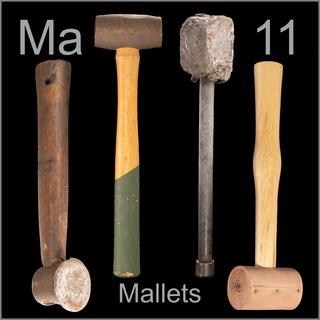 |
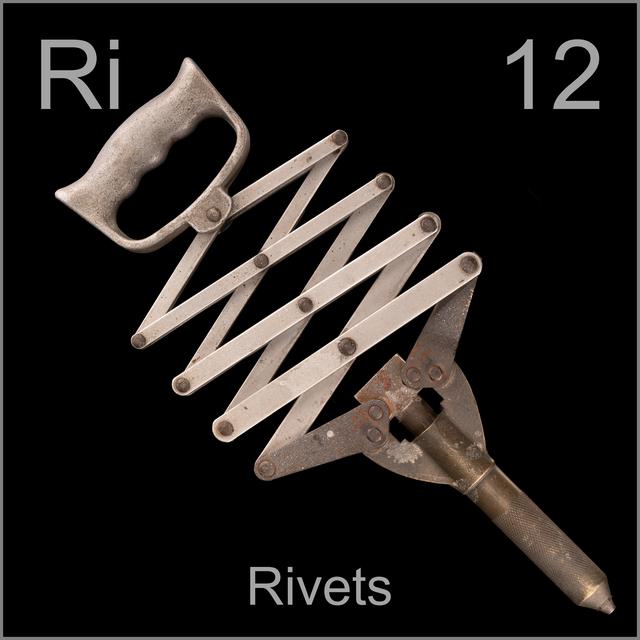
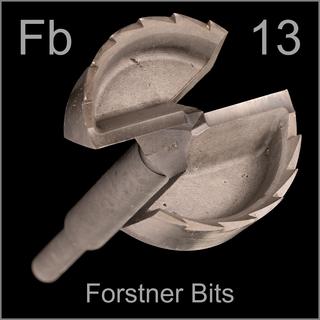 |
Leave a comment below! Or click on an individual tool to see more or leave a comment about that tool. |
|
 |
|
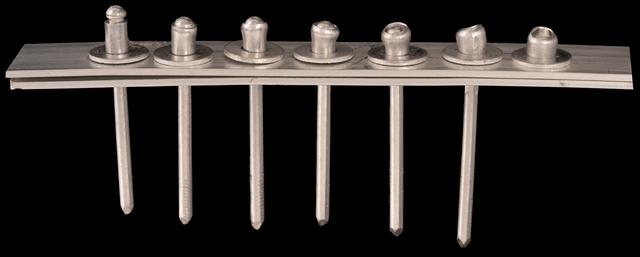 |
| Pop rivets start as a straight sleeve with a nail-like rod through it. The tool pulls the rod, compressing the sleeve. Eventually the rod snaps, leaving the compressed sleeve in place as a rivet. |
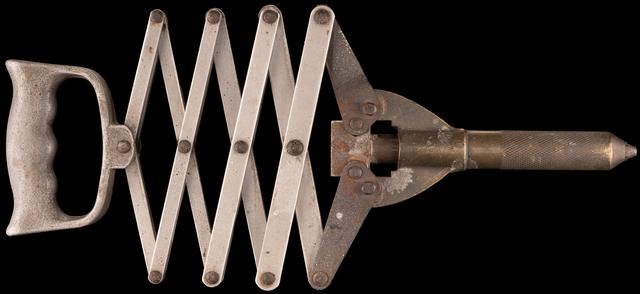 |
| This magnificent rebel is a “Lazy Tong” pop riveter, which uses an accordion to cleverly translate about two feet (600mm) of hand movement into less than an inch (2cm) of rivet stem movement, allowing this tool to magnify the force of your hand movement by about 30-1 (even more near the end of the stroke when the accordion is most compressed). The rivet is pulled in and popped off while you are pushing the handle down, which is what you’d want for a tight joint. Notice how the bars get thicker the closer you are to the business end. The whole accordion works together to create the overall leverage ratio, but the force accumulate on the end that is resisting movement. |
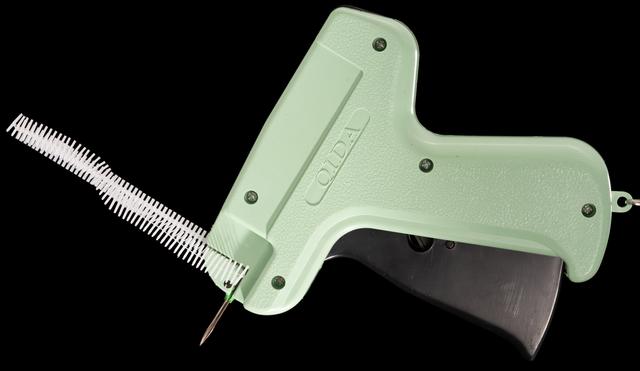 |
| Not sure if this counts as a stapler: it applies those annoying hanging tags on clothes that create a snag when you try to pull them out. |
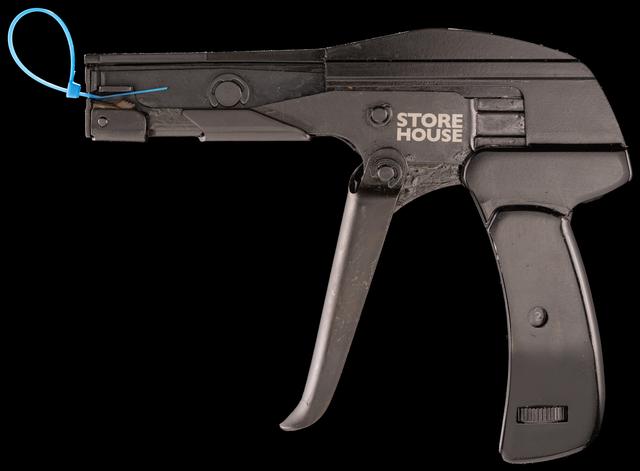 |
| Again, not exactly a stapler, but related: this tool pulls zip ties tight and then cuts them off right at the head. |
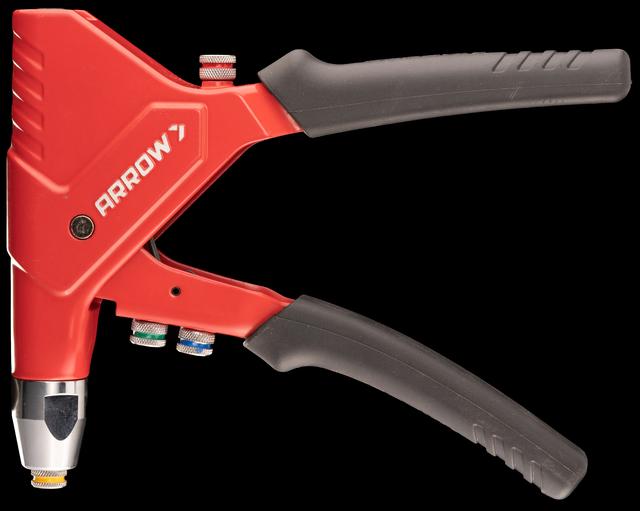 |
| Riveter |
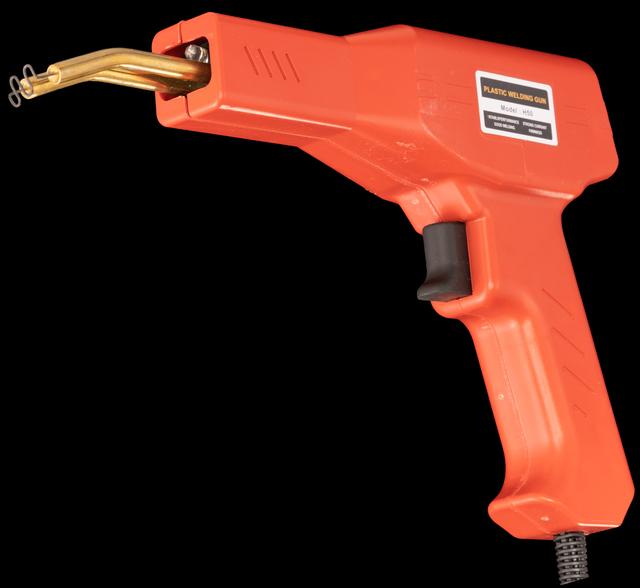 |
| Heated zig-zag staples melt down into the surface of a cracked piece of plastic, bridging the gap and hopefully restoring some strength. |
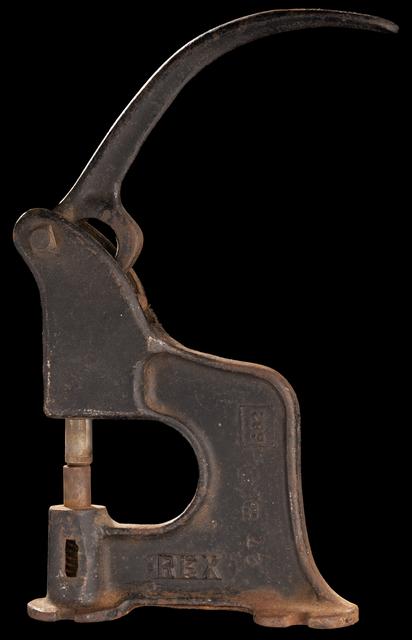 |
| Small rivets can be applied cold with a rivet press. |
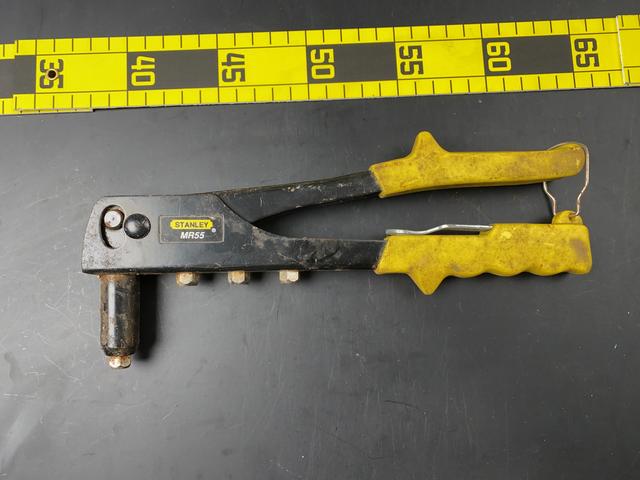 |
| Riveter |
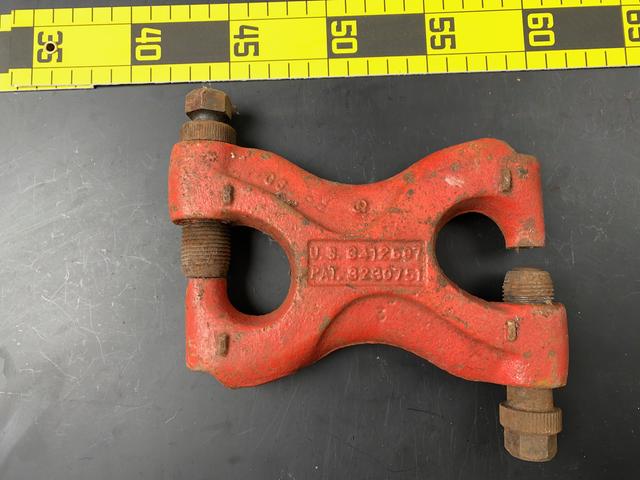 |
| This is a specialized rivet press meant for riveting the blades on a sickle bar mower. |
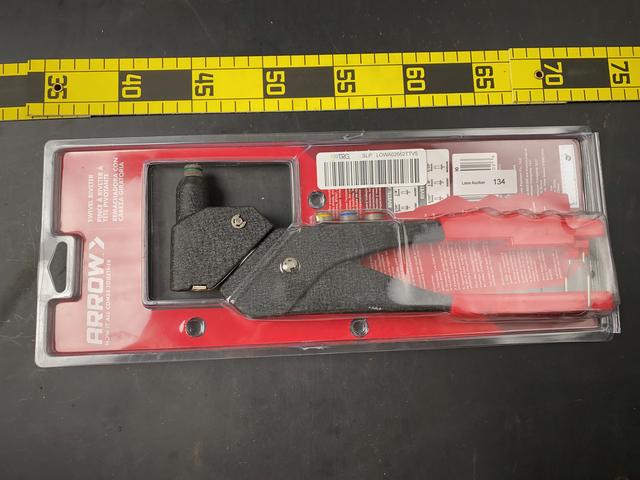 |
| Small aluminum pop-rivets are applied with this tool, which simply grips and pulls the end until it snaps off. |
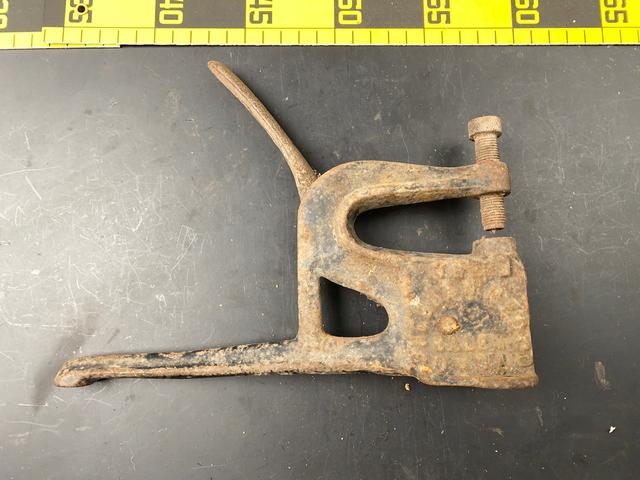 |
| This rivet press was specifically designed for the rivets that hold together leather horse harnesses. |
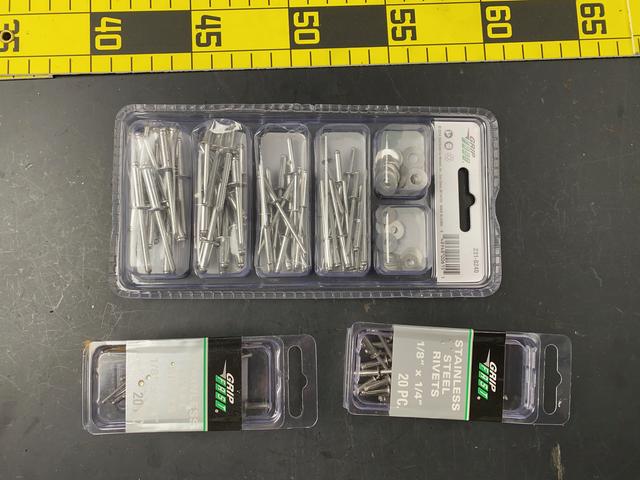 |
| Pop Rivets. |
Do you have a better example of this kind of tool? Let me know by leaving a comment, and include a picture of it if you can so everyone can see!